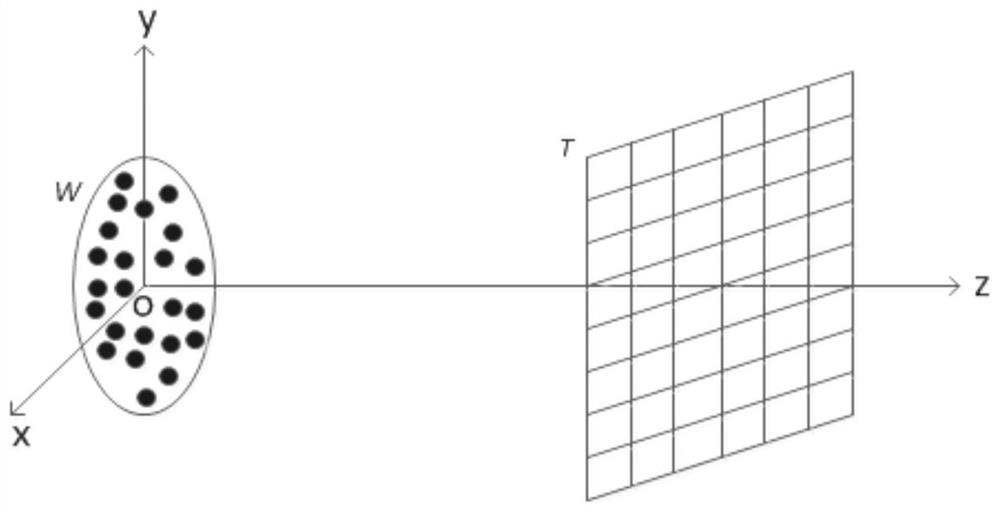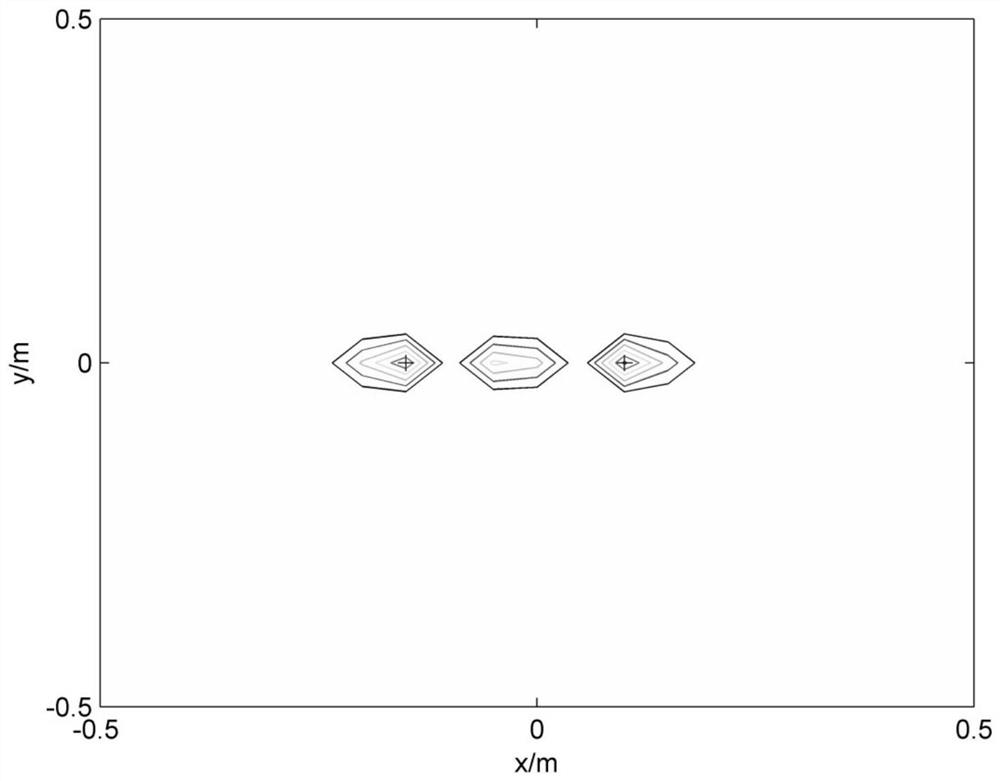Deconvolution sound source imaging method for identifying coherent and incoherent sound sources
An imaging method and deconvolution technology, applied to instruments, measuring devices, radio wave measurement systems, etc., can solve problems such as impractical, impractical, and low calculation efficiency, and achieve improved robustness and good noise robustness performance, high computational efficiency
- Summary
- Abstract
- Description
- Claims
- Application Information
AI Technical Summary
Problems solved by technology
Method used
Image
Examples
Embodiment Construction
[0055] In this embodiment, the deconvolution sound source imaging method suitable for identifying coherent and incoherent sound sources is performed as follows:
[0056] Step a, according to figure 1 In the model shown, M sensors are arranged in an array in the sound field formed by the radiation of K sound sources to form a measurement surface W, and the detection signals of each sensor are collected to obtain the measured sound pressure p. The number K of sound sources is smaller than the number M of sensors. The sensor is a microphone.
[0057] Step b. In order to suppress the influence of the self-noise of the sensor on the sound source identification result, improve the spatial resolution of the sound source. The principal component analysis method is used to perform denoising processing on the measured sound pressure p to obtain the denoising pressure This algorithm has better noise robustness.
[0058] Step c, according to figure 1 In the model shown, the sound sou...
PUM
 Login to View More
Login to View More Abstract
Description
Claims
Application Information
 Login to View More
Login to View More - R&D
- Intellectual Property
- Life Sciences
- Materials
- Tech Scout
- Unparalleled Data Quality
- Higher Quality Content
- 60% Fewer Hallucinations
Browse by: Latest US Patents, China's latest patents, Technical Efficacy Thesaurus, Application Domain, Technology Topic, Popular Technical Reports.
© 2025 PatSnap. All rights reserved.Legal|Privacy policy|Modern Slavery Act Transparency Statement|Sitemap|About US| Contact US: help@patsnap.com



